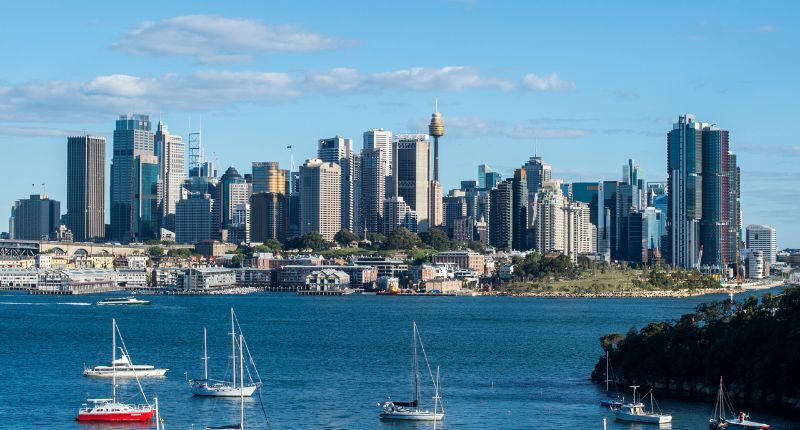- Pace of growth has slowed since 2022
- Demand remains despite economic headwinds
- Cost per desk has marginally increased
The office sector has broadly performed well despite the economic headwinds and the hybrid working trend, or work from home.
Across several reports from industry, the consensus seems to be that a supply shortage of quality product coupled with the flight to quality is a primary driver for rising rents in the office sector.
Among the other drivers of price growth: rising costs of construction delivering heightened price growth for pre-fitted spaces, excellent employment figures, and more. Those trends are of course not consistent across the country, Melbourne was the main suspect when it came to a “stubbornly slow return to work“, while work from home (WFH) seemed practically nonexistent on the Gold Coast.
Flexible space steadfast against the headwinds
According to figures from both Rubberdesk’s latest Flexible Office Space Report, and The Instant Group, flex space remains an in-demand product.
Nationally, the Rubberdesk figures showed a slight increase in available flexible office space (+1.9%) and a marginal cost per desk increase of 0.6%, bringing it to an average nationwide cost of $650.
The Instant Group data found that across 2022, Brisbane demand rose 8% compared to pre-pandemic levels (2019) with the drivers of activity largely from the bigger companies and multinationals shifting from traditional leasing models to flexible ones. The company’s data also showed a one percentage point drop in demand between 2022 and 2021 levels.
“Last year, demand for flexible workspaces in Brisbane fluctuated due to the uncertain market conditions caused by Covid-19. Some businesses reduced their footprint, while others sought out flexible workspace solutions. This resulted in a volatile market with changing demands and preferences,” said Jordan Cui, Associate Director at The Instant Group.
“Currently, demand in the Brisbane market is picking up while supply is increasing on the fringes. At Instant, we are working with several multinationals that are looking to move from commercial tenancies to flex where their main focus is on the amenities that an operator provides,” added Cui.
The Instant Group’s data also showed a 14% growth in flex space supply in Brisbane across last year compared to pre-pandemic levels.
Sydney spaces up, and prices down across the North and the West
Demand for flex space rose throughout the first few months of this year, peaking in March, according to the Rubberdesk data.
Prices for flex space rose across most eastern seaboard capitals except for Sydney, which remained steady; the increases were in the order of 6% or more.
Rubberdesk’s CEO and Co-Founder Jim Groves said, “the uncertain economic and business landscape has prompted an increased interest in flex office spaces, driven by the favourable terms of one-year leases, low-security deposits, and the convenience of turnkey services and community amenities.”
The report also found the breaks have been put on Sydney flex office prices, with a sharp rise in 2022 slowing to only a 0.8% quarter-on-quarter rise in the latest data, up to $958 per desk. It was also noted that larger offices for teams of 50 or more staff saw a 23% rate increase reaching $982 per desk.
Spaces in Sydney saw a quarterly increase of 15.5%, with the Rubberdesk data also showing prices remained relatively unchanged. North of the bridge, prices dropped from $600 to $550 per desk in North Sydney, with Parramatta prices, in Sydney’s west, dropping 4.3% to $765 per desk per month.
Melbourne demand and prices rise
Rubberdesk data showed the average desk rates in Melbourne rose by 7.7% to $700 per desk, with smaller offices experiencing the most substantial increase.
As similar to Sydney, locations heading outward from the main CBD saw prices decline, the report noted areas such as Cremorne, Southbank, South Melbourne, and Richmond recorded an average decline of 5%.
“Based on the first quarter figures, I’m cautiously optimistic about the year ahead. There has been a notable influx of new premium flex office spaces entering the market, and demand from businesses has remained robust,” said Groves.
Brisbane sees spaces fall over 30%
The supply of flexible office space in Brisbane fell 31% from the previous quarter, with the Rubberdesk figures showing desk rates increased by 8.3%.
Unlike Sydney and Melbourne, locations outside of the main CBD did not see falls. Instead, South Brisbane, Fortitude Valley, and Milton remained unchanged, while Bowen Hills saw a 4% increase to $556 per desk.
Small cities all on the up
Perth recorded what the Rubberdesk report noted was a “new pre-pandemic high of $700 per desk per month.” That represented a quarterly rise of 3.7%.
Just north of Perth’s main CBD, Northbridge was found to have the highest rates of $850 per desk, while West Perth and Burswood saw costs around $550 to $600 per desk, respectively.
Canberran desk rates have recovered from a fall across the second half of 2022, according to the report, with prices up 9.6% quarter on quarter. The report noted the latest cost of $500 per month is “… back to its long term norm.”
Adelaide continues its upward, the city now commands $644 per desk per month. Rubberdesk’s report found supply had a quarterly contraction of 3%.








